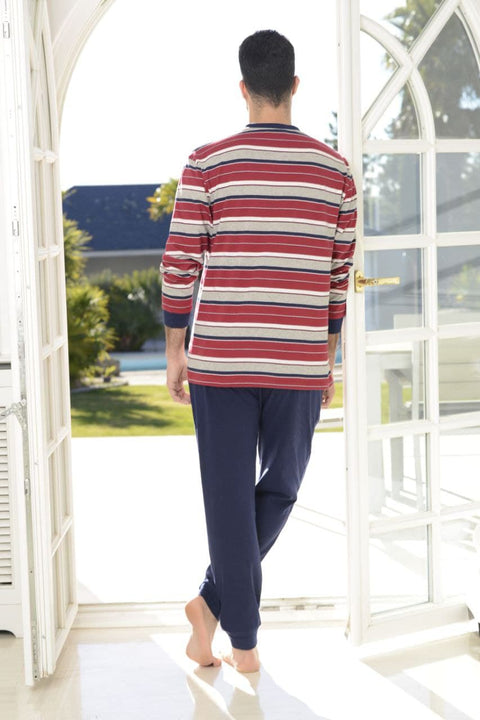The textile industry, one of the oldest of humanity. History specifies that the oldest known woven is prior to 5000 B.C. Essentially, for the manufacture of textiles, the main requirement is to have a source of fiber from which a type of thread can be developed.
The thread is processed through weaving or braiding, which turns the finest thread into woven. Now, the machine used for interlacing is the known loom, and also, for the decoration of these wovens, the process of coloring the thread or finishing the material is dyeing.
The art of tailoring involves shaping the different tastes and needs of people into clothing pieces for various occasions that in many and unique ways express their character and personality. That is, tailoring garments is not only limited to fulfilling a specific utilitarian function, but also to being aesthetically unique.
Clothing
Thus, we have garments from day to night, clothes for going to work, for meetings with friends or family, for going to the gym or walking, and for nighttime rest, the pajama. All garments designed for specific purposes and with special characteristics that make them fulfill the function for which they were designed.
But tailoring also involves the ideal woven so that this authentic garment is truly perfect. Currently, there are types of fibers widely used in the industry, such as natural fibers of vegetable origin like cotton, linen, bamboo, jute, and hemp, animal or protein origin such as wool, silk, and angora.
These fibers have been used for centuries for the creation, design, and production of all kinds of garments including pajamas for ladies, gentlemen, and children. But also, there are fibers made by man, that is, artificially made based on natural raw materials, such as rayon, acetate, modal, cupro, and lyocell, recently developed.
Additionally, the industry currently develops a series of synthetic fibers, a classification of man-made fibers, which specifically come from synthetic chemical elements as a base instead of natural chemicals.
Variety of Wovens
Currently, there are many varieties of wovens for the manufacture of garments for all uses. Thanks to the evolution of technology that allows the continued development of various types of wovens used mainly in the fashion field with two objectives; on one hand, to improve the quality and characteristics of the different garments such as comfort, resistance, functionality, and other important attributes in tailoring. On the other hand, the social commitment to ensure environmental protection during the tailoring process.
In recent years, many brands have advanced greatly in these two areas. Among the most common wovens, cotton is ideal for very comfortable and commercial pajamas, as cotton is the most common and popular woven since it is a natural fiber, with natural shine and a warm and soft touch. Also, it is a quite resistant material, perfectly absorbs moisture, and better retains body heat.
Another textile that sells very well is elastane, which as a synthetic fiber mixes very well with cotton, also providing great elasticity. You can find in the market pajamas that have more than 90% cotton and a minimum percentage of elastane, which guarantees enough elasticity for the garment to perfectly adapt to the body, as well as greater mobility without deforming the garment.
Now, organic cotton essentially has the same properties as inorganic cotton fibers; the difference lies basically in its color, as well as in the obtaining process and the tremendous environmental limitations during its handling and treatment. Because organic cotton is grown without any synthetic additives or pesticides, and it is not genetically modified, it is sustainable and environmentally friendly.
Eco-friendly Textiles
Framed in this important idea of social responsibility, we also have Tencel, which is a brand of regenerated fibers from wood pulp to produce cellulose-based fibers. This fiber uses renewable raw material from sustainable forests where felled trees are replanted, as a policy that bets on high resource efficiency and the lowest ecological impact as a goal.
Likewise, the production processes of this fiber are indeed much more efficient and sustainable. This results in better properties of touch, absorption, color, and shine.
There are two major groups of Tencel fibers; Tencel Modal and Tencel Lyocell. The difference between the two major groups lies in the production process, their format, and some intrinsic properties. Both are very fine fibers, with a soft touch, good mechanical resistance, and elastic recovery. They also have greater adaptability and better drape. Both have a soft, cool, and silky touch, a high degree of absorption, good color retention, and shine. Additionally, they have very low static electricity.
Other Fibers and Textiles
In this search for versatile fibers, we have polyamide, which is a synthetic fiber with high wear resistance, providing greater durability as well as high elastic recovery, that is, a great capacity to maintain its shape, offering non-deformable pieces with use.
Also, it dries quickly, as it has very low absorption, and it is easy to handle and treat after use. Finally, it is a fiber highly resistant to microorganisms; hence polyamide microfiber considerably improves touch properties and facilitates moisture and temperature management.
But if we believe in more traditional fibers, polyester is a synthetic fiber with high resistance to breakage and friction wear. It also has high elasticity and quick drying, making it very easy to handle and treat after use. It is a thermal insulation fiber and basically very resistant to microorganisms.
It is very important to know these textile possibilities because when choosing a pajama, it is possible to know not only the garment's properties in use but also the care for its preservation. Undoubtedly, today, the textile industry makes great efforts to provide the best quality in textiles for manufacturing garments of great durability and not only attractive in design.
Garment design, especially for nighttime rest, must involve comfort, durability, hygiene, and aesthetics. Visit our website El Búho Nocturno where you will find numerous collections of pajamas that you will surely love.

